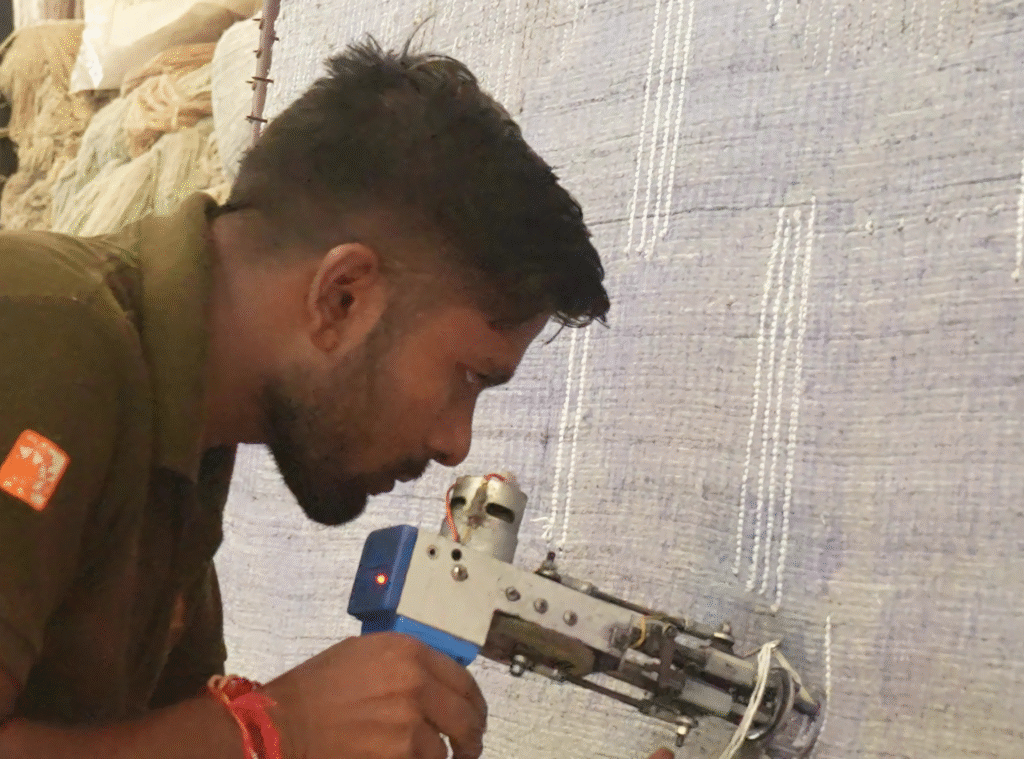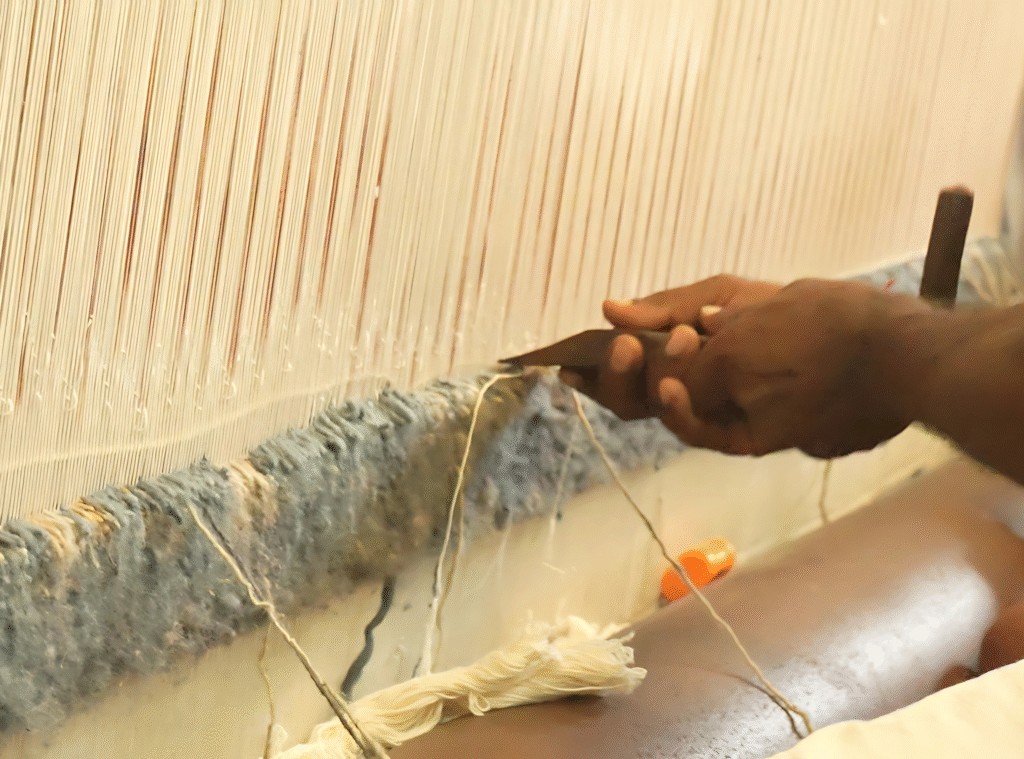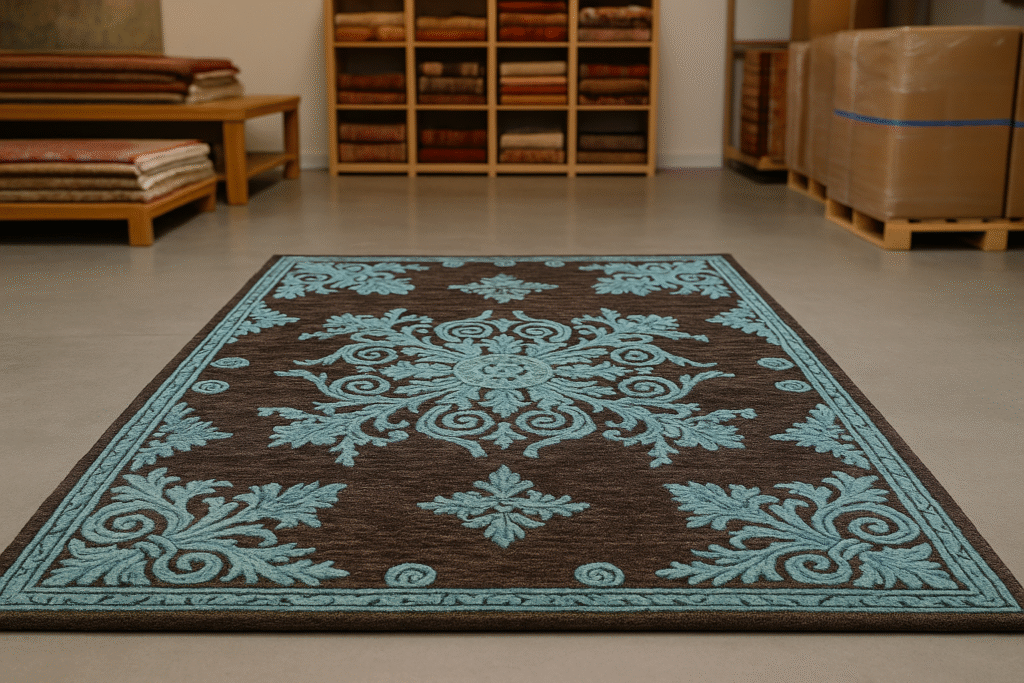Handmade rugs attract discerning buyers with their craftsmanship, cultural value and unique designs. Retailers who want to offer high-quality rugs may find it beneficial and more profitable to buy directly from manufacturers as long as they are guided properly. This guide will provide you with all the steps to find and collaborate with handmade rug suppliers who sell high-quality products.
1. Why Buying Directly from Manufacturers Matters
Purchasing handmade rugs directly from manufacturers offers multiple advantages for retailers:
- Increased Profits: Avoiding middlemen mean a better chance of making profit.
- Customization: Rug manufacturers often make it possible to adjust the design, choose various sizes or select exclusive styles suited to your customers.
- Stronger Relationship: Supplying directly to retailers fosters stronger business relationships.
- Transparency: It is clear who produces these rugs and under what conditions because all the information is available.
Tips for Choosing a Reliable Handmade Rug Manufacturer
Finding the right manufacturer or handmade rug supplier is the foundation of a successful retail offering. Here’s what to evaluate:
Reputation and Track Record
- Client Reviews and Testimonials: Review other retailers’ feedback about the supplier and request some references.
- Brand Recognition: Reputable manufacturers often attend trade shows.
- Consistency in Craftsmanship: Sample work to determine how the company performs in crafting products.
Certifications and Authenticity
- Check the Authenticity: Request certificates of authenticity or proof from artisan cooperatives to confirm that the rug is genuinely handmade—whether crafted by an individual artisan or a skilled team.
- Fair Trade or Ethical Compliance: Ensure your rug supplier supports fair wages, safe working conditions and sustainable practices. Partner with manufacturers who actively invest in the well-being of local artisan communities.
- Origin Proof: Authentic Persian, Indian, Turkish or Afghan rugs often carry unique region-specific markings or documentation that prove their geographic origin. Always request proof of origin when sourcing premium handmade rugs.
2. Key Questions Retailers Should Ask Suppliers

Before committing to a handmade rug supplier, clarify the following:
- Which one of these does your rug have as its primary material: wool, silk, cotton, or a blend of several fabrics?
- How are the popular rug styles called hand-knotted, hand-tufted or flat-weave made by people?
- Would you make rugs customized by clients or provide private labelling?
- How do you handle quality controlbefore dispatch?
- What are your lead times and shipping policies?
3. Visiting Manufacturers or Workshops
A visit to the rug production factory gives you unique understanding that cannot be found elsewhere:
- Observe the Weaving Process Firsthand: Watch the process to learn how hard and careful it is.
- Evaluate Working Conditions: Ensure that employees are taken care of and their wellbeing is looked after all through the day.
- Build trust: Face-to-face meetings with a business partner help you trust them more, making negotiations run efficiently.
4. Logistics and Import Considerations
Importing handmade rugs involves understanding logistics, duties and shipping methods. Here’s what to keep in mind:
- Freight Options: Air freight for quicker, although more expensive, deliveries and sea freight for saving money when the order is big.
- Customs Documentation: You should make certain that invoices, origin certificates and packing lists are correct and have no errors.
- Duties and Taxes: At the time of import, discover any taxes on textiles so that you avoid surprises in the cost.

5. Ensuring Quality Consistency
Quality assurance is critical for customer satisfaction and brand reputation. Retailers should:
- Set Clear Specs: Define materials, knot density and size tolerances with your supplier.
- Conduct Spot Checks: Randomly inspect incoming rugs or hire third-party quality inspection services.
- Create a Returns Policy: Negotiate terms for returns, defects or exchanges with your supplier upfront.
6. Building Long-Term Supplier Relationships
Long-lasting alliances might be truer partners than just looking out for short-term costs. Here’s how to nurture long-term success:
- Stay in Regular Touch: Deliver expectations, information on demand and plans for the products to the supplier.
- Provide Loyalty: Volume purchasing and steady business may result in improved prices or special service.
- Market the Partnership: Share with your customers the history of your rugs and your partnership with artisans and manufacturers. It adds brand authenticity.
7. Why Handmade Rugs Add Value to Your Retail Offering

Handmade rugs not only provide eye appeal, but also add heritage, longevity and beauty to your product offerings. Being a retailer, selling authentic, handmade rugs:
- Enhances Brand Perception: Luxury handmade rugs position your store as a location for high-quality and refinement.
- Interests Intelligent Customers: More people today want to buy products that are real and favor sustainable ones.
- Offers Loyalty: Satisfied customers often order another product or share about it with someone else.
Conclusion
Buying factory-direct, handmade rugs can be an eye-opening change for any merchant. Buying from the right source of handmade rugs makes it possible to supply clients with unique products, support talented people and receive genuine items. Stick to ethical values, nurture reliable partnerships and provide reliable products to be successful in respectable cuisine. Taking steps to ensure honesty and transparency in your supply chain will give you solid returns in both reputation and mission.
FAQs About Sourcing Handmade Rugs for Retail
Q1. How can I verify if a rug is truly handmade?
Look at the back of the rug; genuine handcrafted rugs have varied, complex knotting designs. Perfect symmetry and uniform stitching abound on machine-made rugs. Additionally ask the supplier for a certificate of authenticity.
Q2: What materials should I search for in excellent handcrafted rugs?
Natural materials are chosen, for example, wool, silk and cotton. The fabrics wool and silk are deep and strong, keeping it clean and help you look elegant and beautiful.
Q3. How do hand-knotted rugs differ from hand-tufted rugs?
Hand tying every knot needs more time, yet the rug becomes stronger and maintains its quality longer. Usually made with a tufting gun and extra backing, hand-tufted rugs are more reasonably priced although they tend to wear off faster.
Q4. How do I ensure the manufacturer follows ethical practices?
Ask them for information about their supply chains, workers’ wages and labour conditions. Choose hand rug suppliers who are members of fair-trade associations or provide transparency in their artisan relations.
Q5. Can any custom rug designs be purchased from the manufacturers themselves?
Yes. It is very common for custom rug manufacturers to give clients the chance to choose their preferred design, colors, dimensions and shape. Make sure to detail what you need and request mock-ups or some products as a sample before placing a large order.

